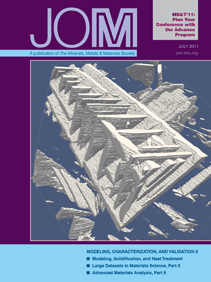VISIT THE
JOM COVER GALLERY
|
|
Likelihood of Confusion—The Basis for Trademark
Infringement
David V. Radack A trademark is a word, name, symbol, or other
device, or combination thereof that serves to identify the source
of goods or services and distinguish them from others. Well-known
trademarks include Coca-Cola®
for a beverage and Marlboro® for cigarettes. A service
mark identifies and serves to distinguish the sources of competing
services from each other. Famous service marks are Holiday
Inn® for hotel services and McDonald’s®
for restaurant services. In this article, for convenience, both trademarks
and service marks will be referred to as “trademarks.”
One of the main functions of a trademark is to prevent consumer confusion.
For example, a consumer knows that he or she can get the same quality
food in a McDonald’s
in Pennsylvania as he or she can from a McDonald’s
in California. Given our global economy, the importance of trademarks
cannot be overstated. The law of trademarks is designed to prevent
competitors from confusing customers into thinking that they are buying
products and services from a trusted, known source when in reality,
this is not the case. A competitor who uses a trademark that is confusingly
similar to an existing trademark can be prevented from doing so by
the application of trademark law. This usually occurs when the holder
of the trademark raises a claim or sues the alleged infringer.
In order to prove trademark infringement, the owner of the trademark
must show that there is a “likelihood of confusion” between
his or her trademark and the allegedly infringing mark. Over many
years and many cases, the courts have set forth a list of eight to
13 elements that are relevant to this determination. This article
will discuss the two or three most important of these elements and
provide examples of how each element is applied in practice. The most
important element of the likelihood of confusion analysis is a comparison
of the appearance, pronunciation, meaning, and commercial impression
of the respective marks. Obviously, if the marks are exactly the same
in spelling and how they are pronounced, there is a greater chance
of likelihood of confusion between the marks. It is important to note
that slight misspellings or changes in an established mark will not
enable a competitor to use his proposed mark. For example, a beverage
manufacturer could not adopt the mark “Koka Kola,”
because although this mark is spelled differently from the famous
Coca-Cola
mark, it is still pronounced the same.
This so-called “sight, sound, and meaning” test, while
the most important element, is not the only element. Also important
is the relatedness of the goods or services. If the goods on which
the marks are used are unrelated, the chance of confusion is slight,
even if the marks are similar or even exact in sight, sound, and meaning.
Examples of this situation are very common. Delta, for instance,
is a service mark for airline services, but also functions as a trademark
for plumbing fixtures. Two separate companies own those marks. There
is no likelihood of confusion between these marks as applied to their
respective goods/services because the goods/ services are unrelated.
That is, no rational consumer would assume that these goods and services
emanate from the same source. It is important to note that no one
element of the likelihood of confusion analysis is dispositive in
and of itself. Rather, the courts look at all the relevant elements
and carefully weigh each one before determining whether a likelihood
of confusion exists.
The last element to be discussed in this article is the sophistication
of the purchasers of the products/services. Generally, the more sophisticated
and knowledgeable the purchasers, the less likely it is that those
purchasers will be confused by similar marks. For example, purchasers
of jet engines for airplanes will most likely be professional purchasing
agents with an intimate knowledge of competing products. Simply put,
their purchasing decision is not primarily based on a comparison of
the marks, per se, but is based on a deep understanding of the products
and their manufacturers. On the other end of the scale, the ordinary,
unsophisticated supermarket shopper is likely to be highly influenced
by the marks used on products. He or she has neither the time nor
the inclination to research competing products. The possibility for
confusion of an unsophisticated purchaser is more acute, and thus,
a similar mark may create a likelihood of confusion in the mind of
an unsophisticated consumer where, in the same case, none would exist
in the mind of a sophisticated purchaser.
There are other factors in the analysis, but space limitations prevent
them from being discussed in this article. What is important to remember
is that no one factor is determinative of likelihood of confusion,
but instead, all relevant factors must be considered and weighed before
making that determination.
David V. Radack is vice chair of the Intellectual Property
Department and a member of Eckert Seamans Cherin & Mellott, LLC
in Pittsburgh, Pennsylvania.
For more information, contact A.B. Silverman at Eckert
Seamans Cherin & Mellott, LLC, 600 Grant Street, 44th Floor, Pittsburgh,
Pennsylvania 15219; (412) 566-6000; fax (412) 566-6099; e-mail abs@escm.com.
|

